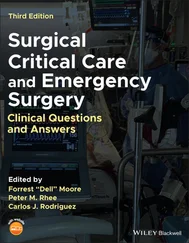Table 5.2 Procedure for accessing an implanted central venous catheter.
| Identify the patient, and explain the procedure to the patient and family.Position the patient safely. Supine positioning is preferred; women and adolescent girls should have their brassiere removed on the side of the catheter.If anesthetic cream was applied to the skin overlying the port, wipe it away before cleansing with povidone‐iodine or chlorhexidine (for patients over 2 months).Perform hand hygiene and don sterile gloves. Most institutions will also require practitioners and patients to wear a mask.Place a sterile towel or drape on the patient's chest below the port to create a sterile field.Attach a 10 cc syringe of saline to extension tubing; attach the other end of the tubing to the noncoring needle. Flush the length of tubing and needle to remove air and lay it on the sterile field.Triangulate the dome of port between the thumb and fingers of nondominant hand. Aiming for the center point of these fingers, use dominant hand to insert noncoring needle perpendicular to the skin and through the septum of the port.Unclamp extension tubing and slowly infuse 2–5 cc of saline; if the line flushes easily, aspirate saline and check for blood return.If there is resistance to fluid infusion or no blood return with aspiration, do not force fluid into the reservoir. Reclamp the tubing and see section on troubleshooting an occluded CVC.If there is successful blood return with aspiration, instill the remaining saline in the syringe. Tape the needle in place at 90° to the dome of the port and apply a clear, sterile dressing. Clamp the tubing and remove the syringe.If the line is needed for blood drawing, aspirate 3–5 cc from the line prior to clamping, as in Step 10. Discard this saline‐and‐blood mixture, and attach a new, empty syringe to the extension tubing. Unclamp the tubing and withdraw the needed volume of blood. Reclamp the tubing, attach a second 10 cc syringe of saline, unclamp the tubing, and flush to clear blood from the line. Clamp the tubing after flushing and remove the syringe.If the line is needed for infusion of medications or fluids, connect primed IV tubing to the catheter hub, unclamp the catheter, and administer fluids or medications as care dictates. |
Catheter Breakage and Dislodgement
Catheter breakage can occur for a variety of reasons, including inadvertent cutting during a dressing change, a patient pulling away during an attempt to access the line, snagging of the externalized portion of a CVC during daily activities or play, or blunt‐force injury during contact sports or accident. Any fluid or blood reported by the patient or witnessed in the ED should be treated as a catheter break. Visualization of the catheter's Dacron cuff outside the chest wall should be treated similarly. To prevent infection, air embolus, or bleeding, broken externalized lines should be immediately clamped with nontoothed forceps proximal to the site of breakage and the damaged portion of the line should be cleaned with povidone‐iodine and covered with sterile dressing. While repair kits specific to each type of CVC are available in many centers, they should be deployed only by those with expertise in their use – usually in consultation with an institutional IV team or interventional radiology. Less commonly, externalized CVCs can fracture proximal to their point of exit in the chest. In these cases, it is critical to apply pressure to the catheter's entrance to the vein and not to the chest wall exit site itself. A chest radiograph should be performed to determine the location of the proximal line fragment. Rarely, fractured catheter fragments are discovered in the pulmonary circulation, from which they must be removed by interventional radiology – usually via a femoral approach. Trauma or patient manipulation may dislodge an implanted port from its subcutaneous pocket in the chest wall. For this reason, practitioners should always check the stability of the port reservoir before attempting to access it with a needle. If port dislodgement is suspected, obtain a chest radiograph to interrogate the integrity of the implanted system. If dislodgement is confirmed by an X‐ray, immediately discontinue any infusions running through the port and notify the interventional radiology or surgery department of the need for catheter replacement.
CVC occlusion is brought to the attention of ED providers either when patients complain of their catheter not working in the outpatient setting, or when ED’s attempts to instill fluid or draw back blood from a CVC are unsuccessful. CVCs are considered to be partially occluded if fluid can be instilled in them, but blood cannot be drawn back. A CVC is fully occluded if neither fluid instillation nor blood aspiration can be completed successfully. If occlusion is suspected, the first step should be to obtain a chest radiograph to determine the position and integrity of the catheter tubing. Catheter occlusion occurs for a variety of reasons, from formation of medication precipitates within the lumen of the line to development of fibrin sheaths and/or thrombus either within or surrounding the catheter tubing. If a small clot is suspected within the lumen of the CVC, the ED practitioner can attempt to aspirate it from the line with a 10 cc syringe that is half‐filled with saline. This technique is rarely successful in removing clots from implanted CVCs, as the small caliber of the noncoring needle used to access the catheter reservoir makes clot aspiration extremely difficult. If clot aspiration is unsuccessful, lysis of the occlusion can be attempted with a variety of lytic agents, depending on the nature of the blockage (e.g. clot vs. waxy precipitate vs. particulate matter). Practitioners should refer to their institution's guidelines for management of CVC occlusion for details on the use of each lytic agent. In centers where catheter fibrinolysis is not within the usual scope of practice of the ED nurses or providers, lytic maneuvers can also be attempted in consultation with an institutional IV team or with interventional radiology. Because it is possible for fibrin sheaths and large thrombi to embolize into the central venous circulation, it is critical that ED providers be able to recognize the signs and symptoms of pulmonary embolus – tachycardia, tachypnea, chest pain, and hypoxemia – and have a high index of suspicion for catheter‐related thromboembolus if a patient exhibits these symptoms. Indwelling CVCs also bring with them an increased risk of catheter‐associated deep‐ or central‐vein thrombosis. Patients with PICC‐associated thrombosis may demonstrate unilateral limb pain and swelling on the side of catheter insertion. Patients with central venous thrombosis associated with either an externalized CVC (Broviac, Hickman) or an implanted port may demonstrate signs and symptoms of SVC syndrome, including edema of the face, neck, or chest and neurologic changes. Both deep and central venous thrombosis are usually indications for removal of the catheter and initiation of anticoagulation.
Air Embolism and Other Rare Complications
While rare, air embolism is a potentially fatal complication of CVCs with which ED practitioners must be familiar. A patient with CVC‐associated air embolism may demonstrate acute‐onset chest pain, dyspnea, hypotension, tachycardia, dizziness, and anxiety. Because such patients may progress to loss of consciousness and cardiac arrest, ED providers suspecting air embolus must act quickly to prevent further air entry into the CVC circuit. Externalized catheters should be clamped immediately, and the patient should be placed in Trendelenburg in the left lateral decubitus position to trap any air bubbles in the right ventricle. Patients with suspected air embolus should be put on 100% supplemental oxygen, and alternate IV access should be obtained as quickly as possible. To prevent air emboli, patients, their care providers, and all ED personnel must keep the externalized portion of any indwelling CVC clamped whenever the line is not actively in use. Finally, because the proximal tip of most CVCs terminates at the SVC‐RA junction, it is important to note that fracture or migration of an indwelling line can lead to other rare intrathoracic complications, including cardiac arrhythmia, cardiac tamponade, or – more commonly during catheter placement – pneumothorax or hemothorax. Patients presenting with these complications are unlikely to implicate the CVC in their chief complaint, so it is incumbent upon the ED provider to have a high index of suspicion in screening for them.
Читать дальше












